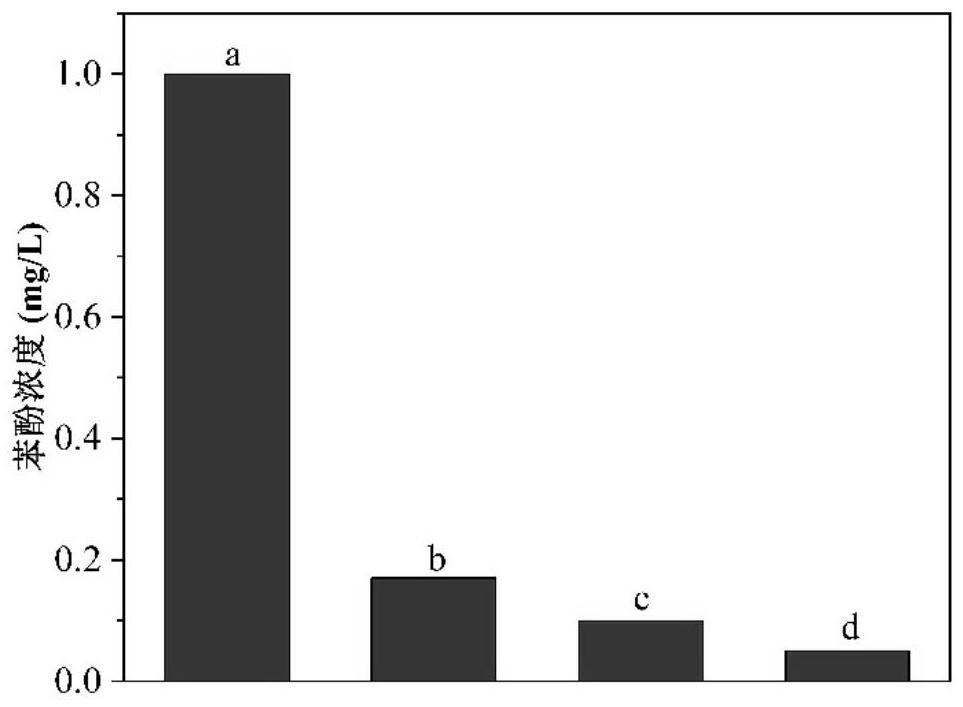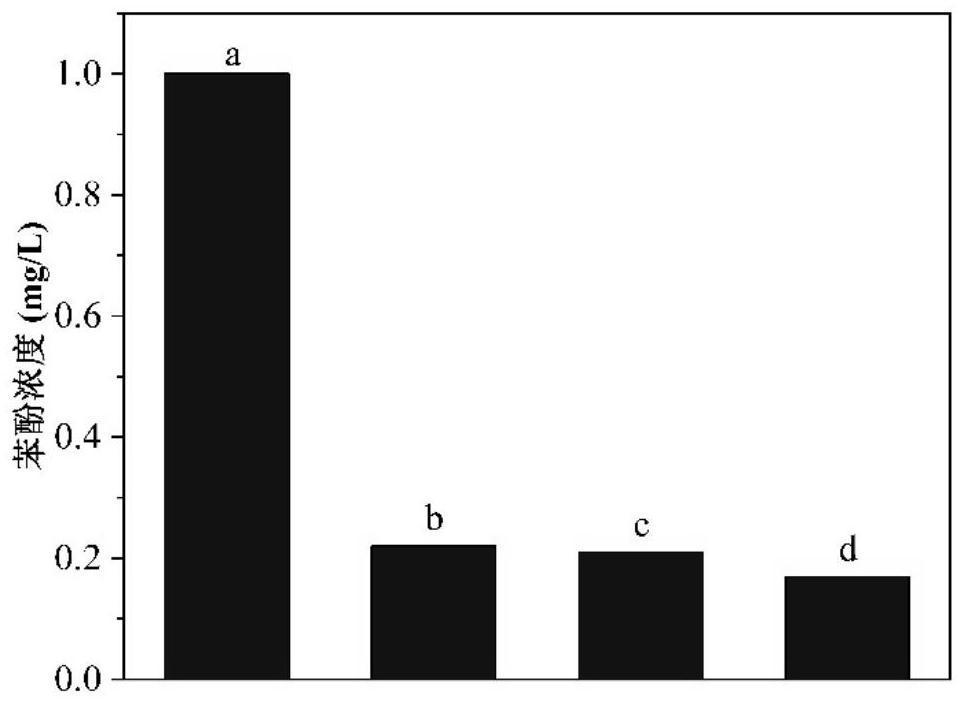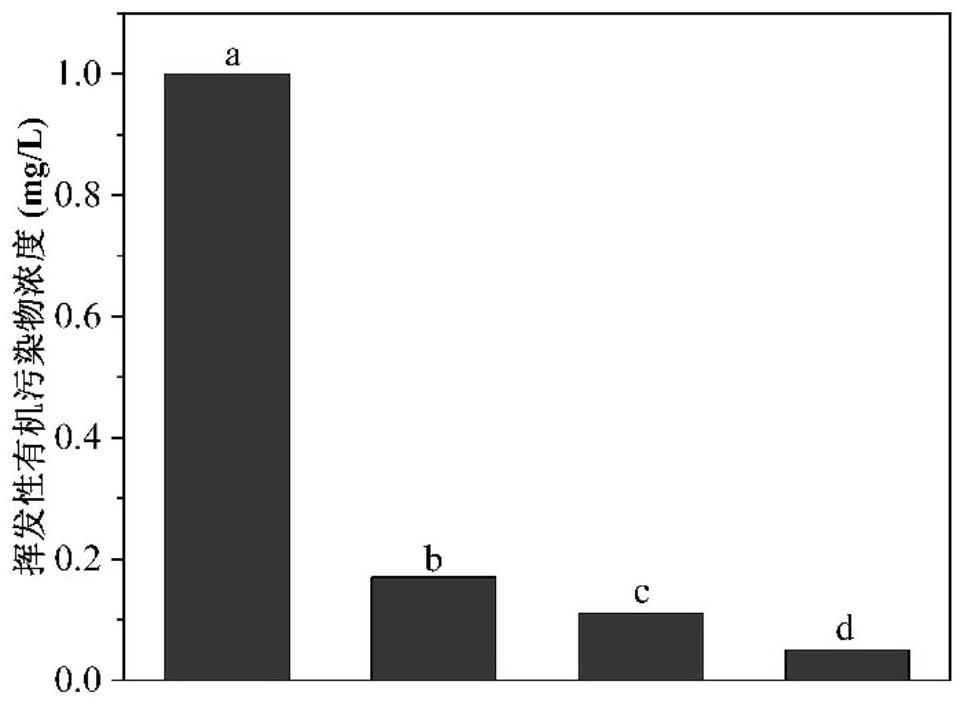Method for reducing VOCs entering photo-thermal distillation condensation desalinated water by using activated persulfate
A technology for distilling, condensing, and desalinating water. It is applied in chemical instruments and methods, oxidized water/sewage treatment, heating water/sewage treatment, etc. It can solve the problems of volatile desalinated water and water quality safety risks, and achieve high evaporation rate. , high salt resistance, and the effect of promoting degradation
- Summary
- Abstract
- Description
- Claims
- Application Information
AI Technical Summary
Problems solved by technology
Method used
Image
Examples
Embodiment 1
[0037] The laboratory artificially simulated seawater containing volatile organic pollutants (containing 1 mg / L phenol, 3.5 wt% NaCl) was used as the experimental water, and 0.1 mmol / L peroxymonosulfate (PMS) or 0.5 mmol / L peroxodisulfuric acid was added. Salt (PDS), to investigate the removal effect of persulfate on VOCs in condensed and desalinated water after photothermal distillation, and the results are as follows: figure 1 and figure 2 shown. from figure 1 It can be clearly seen that under the irradiation of one sunlight intensity, after adding PMS, the concentration of phenol in the condensed and desalinated water is 0.17 mg / L, which is far lower than the concentration of the phenol stock solution. When the light irradiation intensity was 2 suns and 4 suns, the concentration of phenol in distilled water decreased further, which were 0.1 mg / L and 0.04 mg / L, respectively. figure 2 It can be seen that at 1, 2, and 4 sunlight intensities, after adding PDS, the phenol c...
Embodiment 2
[0039] The artificial simulated seawater (3.5wt% NaCl) containing 1mg / L phenol, p-cresol and p-chlorophenol was used as experimental water, and 0.1mmol / L peroxymonosulfate (PMS) or 1mmol / L peroxodisulfate ( PDS) to investigate the removal effect of persulfate on VOCs in condensed and desalinated water after photothermal distillation, and the results are as follows: image 3 and Figure 4 shown. from image 3 It can be seen that under the irradiation of one sunlight intensity, after adding PMS, the concentrations of phenol, p-cresol and p-chlorophenol in the condensed and desalinated water are 0.17mg / L, 0.11mg / L and 0.05mg / L, respectively. much lower than their respective stock concentrations. from Figure 4 It can be seen that after adding PDS, the concentrations of phenol, p-cresol and p-chlorophenol in the condensed and desalinated water are 0.2 mg / L, 0.005 mg / L and 0 mg / L. It shows that the method of adding persulfate can effectively reduce the entry of phenol, p-creso...
Embodiment 3
[0041] Prepare raw water containing 1mg / L phenol with actual seawater from the East China Sea, and add 0.1mmol / L peroxymonosulfate (PMS) or 1mmol / L peroxodisulfate (PDS) to observe the condensation and desalination of persulfate after photothermal distillation. The removal effect of VOCs in water, the results are as follows Figure 5 shown. Under the irradiation of 1 sunlight intensity, adding PMS or PDS has a good reduction effect on the actual seawater configuration of phenol. VOCs in .
PUM
 Login to View More
Login to View More Abstract
Description
Claims
Application Information
 Login to View More
Login to View More - R&D
- Intellectual Property
- Life Sciences
- Materials
- Tech Scout
- Unparalleled Data Quality
- Higher Quality Content
- 60% Fewer Hallucinations
Browse by: Latest US Patents, China's latest patents, Technical Efficacy Thesaurus, Application Domain, Technology Topic, Popular Technical Reports.
© 2025 PatSnap. All rights reserved.Legal|Privacy policy|Modern Slavery Act Transparency Statement|Sitemap|About US| Contact US: help@patsnap.com



